

The pharmaceutical companies continued to produce colloidal silver products, but their use gradually fell into disfavor with the development of sulfa drugs, and the later development of penicillin. By the mid 1970's, all of the major U.S. pharmaceutical companies ceased production of these products.
By 1990 there were only a few people making silver solutions - mostly dietary supplement producers. They made the product themselves, on a small scale in the way the solutions had previously been made. Unfortunately, this usually resulted in a totally unstable product that showed only sporadic effectiveness. In 1992, a U.S. Doctor, was using a colloidal silver made by a company named Silverado. He noticed that Silverado's product produced limited effectiveness against some infections some of the time, but wasn't effective at all against the same infection at other times. The Doctor had the foresight to believe that silver solutions had the potential to be very effective in treating infections if manufactured properly. He then contacted the research department of a national pharmaceutical company, and requested that they look into a possible problem with the Silverado product, or research the possibility of manufacturing a better silver solution.*
This U.S. pharmaceutical company's research department found the problem immediately with the Silverado product, and contacted the company. Silverado stated they would work in correcting the problem.*
A few months later, the pharmaceutical company's research department discovered a unique way to infuse the silver into one particular protein. This produced an extremely stable mild silver protein (MSP) with enhanced antibacterial properties. Further testing confirmed the compound to be extremely stable. The product was then sent out to doctors, the NIH, and universities for testing.*
Test results of these poorly-made silver solutions reveal that many of them contain no silver or silver ions, and are in some cases nothing more than colored water.
Additional in vitro testing against a common bacteria (S. aureus) showed some of these products to be totally ineffective, as noted below:
Zone of Inhibition Source Naturals (Ultra Coloidal) 0 Silver Care 0 Kaire International 0Although most of the newly-introduced silver solutions appeared to be frauds, a few silver solutions tested did contain some silver, and reflected some stability. Nevertheless, other problems were identified. For example, although some silver solutions were stable for a few weeks, ultimately the silver precipitated. This happened in *"all" tests conducted with solutions of silver and water only. Some manufacturers stated that their products were produced via electrical charge, which implied that the product contained silver ions. Tests revealed the ion content to be no more than that of normal tap water.Some silver products were made from silver nitrate which can be extremely toxic if any silver nitrate remained in the product- Additionally, protein stabilized products can have high concentrations of nitrites, nitrates and sodium, which can be toxic. One product tested, which was labeled as being manufactured by an FDA-approved laboratory - although not stating a lot number or expiration date misstated the concentration of the product by over 400 ppm. This product is called Colloidal Silver "High Potency" by Innovative Health Products.
The Silverado product has recently tested again to see if they had corrected their problems. A recent sample of Silverado product was tested, Lot #7328, expiration 4/97. which revealed 4 ppm with negligible silver ions. Another sample of the Silverado's product, Lot 16143, expiration 7/97, revealed 2 ppm with negligible silver ions. Noticeable particles were observed floating within the sample of Silverado's product, Lot #6143.
Ongoing studies done in-vitro and in-vivo over the past three years have revealed that these silver solutions, Special Formulation MSP (SFMSP), and silver solution (SS) have inhibited or have been lethal against HIV. The same effect was found in vitro regarding C. albicans., C. neoformans, the spirochetes in Lyme disease, E. coli, S. aureus, S. pneumonia, and P. aeruginosa. One of the lab's products also partially inhibited Enterococcus in-vitro. Further testing at higher silver concentrations will no doubt prove that this antibiotic-resistant strain of bacteria is also susceptible to the lethal bactericidal effects of MSP.*
Reports from doctors and practitioners that have
been using the new MSP in-vivo for almost three years report correspondingly Condensed limited in-vitro testing results, limited doctors' and patients'
in-vivo reports, and toxicity studies follow.
All references to MSP refer to this new Mild Silver Protein developed
and manufactured in North America.*
Researchers have been warning the medical
establishment for years that the indiscriminate use of antibiotics could
spawn A friend of mine, Dr. Richard Callahan, York, NE, in a recent phone
conversation remarked that, in his opinion, mutated pneumoccus bacteria
and viral pneumonia will be killing thousands of Americans annually within
five years. Bad news indeed.
The good news is that Mild Silver Protein (MSP) may be an answer
to the dilemma we are facing. I have operated a family practice
for 37 years where I have treated all types of infections in patients varying
in ages from infants to over ninety.
Before prescribing any treatment I believe a doctor should determine
if the patient might suffer harmful effects from the treatment. "First
Do No Harm." The treatment should also offer the prospect of helping the
patient recover. MSP meets both of the criteria.
I started using a silver suspension in protocols for patients
with infections in January of 1992. The first patient, a female, had "walking"
viral pneumonia. She was placed on one tablespoon of
the silver suspension t.i.d. She was asymptomatic the fourth day into treatment.
I was astounded. I thought that it might have been a misdiagnosis. Since
that first experience I have treated more than 50 cases of viral
pneumonia with the same positive results. Time of treatment varies,
due to patient condition and severity of infection, from four days to thirty
days. The outcome, however, is consistently positive; the infection is
cleared.
Since that first experience I have included MSP in protocols for all
types of infectious diseases with positive results.
MSP has cleared reoccurring ear infections in children
who were scheduled for tube surgery making the procedure unnecessary.
SystemicCandida Albicans is successfully treated
with MSP. It is so effective we must start with small doses to controlHerxheimer
effect.
Staph and other infections in the mouth(Gingivitis)
have dramatically improved with MSP therapy.
The Lyme disease spirochete(Borrelia burgdorferi)
is eliminated using MSP therapy. I have records of Lyme patients who have
been taking various antibiotics for three or more years who have become
asymptomatic on MSP therapy after just three or four weeks of treatment.
The average duration to rid the body of the spirochete is three to nine
months. Systemic Candida Albicans frequently occurs in patients with Lyme;
complicating the treatment and prolonging the duration of treatment.
Lyme disease is far more prevalent than is generally known. Lyme has
been reported in the U.S. in 43 states, and in all of Canada. I believe
that reported cases of Lyme represent only about 20% of the actual number
of Lyme cases. Lyme is routinely misdiagnosed as meningitis or as a "heat
rash." A red rash is a typical symptom of Lyme. Mild Silver Protein solutions* are proving to be 100% effective in getting
rid of the Lyme spirochete when they are included in the treatment protocol.
The important thing about MSP therapy is that it is non-toxic. I have
never observed any side effect from using MSP therapy, and I have used
it in patients with all kinds of infections. In acute conditions as much
as four tablespoons per day has been given, with no adverse reactions observed
or reported.
HIVpositive patients have responded to MSP therapy
if begun before the advanced stages of full blown AIDS. Temple University
studies indicate that MSP kills the HIV virus in vitro. I believe that
the HIV can be completely eliminated by using higher concentrations of
MSP than can be absorbed with oral dosing. In vivo studies should be done
using 250 to 750 ppm MSP administered IV. Due to the fact that MSP is non-toxic
in high concentrations, this should prove to be a God-sent treatment for
the millions who are suffering and dying from AIDS related illnesses.
The use of AZT and other chemotherapeutic drugs, in the vain attempt
to treat AIDS is, in my view, simply death by prescription. These drugs
destroy DNA and the immune system; a case of "the cure being as bad as
the disease."
Scientists at a major U.S. pharmaceutical company have developed a Mild
Silver Protein solvent formula (MSP). This formula, when applied to the gums, produces
dramatic improvement with the first treatment.*
Saturate a band-aid pad with MSP and apply to ringworm.
The infection is cleared in 2 to 3 days.
Psoriasis(virus in the skin) responds to MSP,
applied topically. Within 3 weeks of treatment (b.i.d.) new normal skin
growth is observed. It takes three to eighteen months of MSP therapy to
heal psoriasis.
MSP is so effective in treating gum diseases (Gingivitis) that,
in my opinion, if widely utilized in the population, it could eradicate
gum disease completely.
I have seen patients withsevere infections of the
mouth whose symptoms included swollen gums, tongue, and cheeks (making
them unable to speak or eat) improve immediately. Following one application
of MSP most could eat. These severe infections are completely cleared
after two to four days of applying MSP four times per day.
We have seen excellent results using MSP therapy in Herpes
genitalis. If MSP is applied topically when itching and soreness occurs
prior to vesicular eruption it prevents eruption in more than 50% of the
cases. Eruptions are mild when they do occur. If treatment is continued
b.i.d. topically to the area, the infection clears in half the usual time.
Patient should also take 2 teaspoons of MSP orally daily and remain
on 1 teaspoon per day to help eliminate future out-breaks.
Herpes Zoster(shingles) has been successfully treated
as well. Pain is substantially relieved and duration of eruption reduced
as indicated above with h. genitalis, (same Protocol).
Mild Silver Protein is not a standard colloidal silver suspension. It
is made by a licensed laboratory, that has research to substantiate
its efficacy and safety for use in vivo to control infection.*
Many companies have jumped on the bandwagon producing colloidal silver
products. Many are unstable; rendering them useless. Most are formulated
with only 3 to 6 ppm. Silver suspensions are not homeopathic remedies.
They are more effective in higher concentrations. The lab formulates MSP at
30 ppm and 40 ppm as a dietary supplement, and topical application.
Types of concentrations I have access to in my practice, range from 30 ppm,
40 ppm, 50 ppm, 100 ppm, 400 ppm, 500 ppm, 1,100 ppm, 2,000 ppm, 5,000 ppm
and 10,000 ppm, with 5,000 ppm "now" being demonstrated to be the most
palatable to the patient and effective*. These concentrations are responsible
for the results achieved with patients coming to my clinic that I have shared
with you in this article.*
Mild Silver Protein has proven to be that blessing in my practice.
In July of 1992 I was bitten by the Deer Tick (Ixodes Scapularis) which
according to Dr. Thomas Craig, D.V.M. of the Department of Veterinary Microbiology
and parasitology carries the Spirochete which is the causative agent of
Lyme disease. After my diagnosis was confirmed a medical doctor, who is
a neurologist, put me first on Penicillin orally for two weeks, and then
intravenously for four weeks. The results to my symptomatology were minimal
and I experienced many side effects including Candida Yeast Infection because
of the penicillin's destructive effect on the friendly acidophilus bacteria
in my stomach and colon. Since this treatment did not work, the neurologist
prescribed a cephalosporin called Rocephan. Unfortunately, this treatment
accomplished no more than the penicillin, had many unpleasant side effects,
and worsened my candida yeast infection.
Not knowing what to do, or where to go next I was led to a Dr. Joseph Cardot from Colorado.
He told me that Mild Silver Protein was helpful against spirochetes
and suggested a regiment to follow. I began with two tablespoons a day
for the first month holding it under the tongue sublingually for a minute,
swishing it around the mouth for ten seconds, and then gargling and swallowing.
I did the same thing for the second and third month, but only one tablespoon
per day.
By the end of the first two weeks my 35 different symptoms, including
extreme pain, paralysis, and numbness were about 25% relieved with no side
effects. By the end of the first month I was over 50% well. By the end
of the second month I was 75% well. After 3 months of treatment I was 100%
well. I have been 100% well for over 2 years. Was I cured from Lyme disease
and candida yeast infection? In my opinion and the opinion of Dr. William
Burgdorfer, Scientist Emeritus who discovered the spirochete as the causative
agent of Lyme disease, and Dr. John Parks Trowbridge, M.D. an author and
expert in the field of candida yeast infection, I appeared to be CURED.
Dr. Burgdorfer, who became a close friend, then shared with me that
the world would not believe my results without scientific documentation.
It seems that there is enough testing from universities, and reports
from practitioners that the Mild Silver Protein developed not only works
on Lyme disease but a good deal more bacterial, viral and fungal infections.*
In 1949, Dr. Sven Hellerström from the Dermatalogical Clinic of
Karolinska Institute in Stockholm, Sweden presented a paper "Erythema chronicum
migrans Afzelius with meningitis" at the 43rd Annual Meeting of the Southern
Medical Association in Cincinnati, Ohio. In presenting his case, he provided
convincing evidence that both erythema and subsequent meningocerebrospinal
symptoms may develop following a tick bite. He also reported on the successful
treatment of his patient with penicillin, a drug shown previously by his
colleague Dr. Hollström to be effective in the treatment of Erythema
chronicum migrans (ECM).
In the United States, ECM was first reported in 1970 on a physician
bitten by a tick while grouse hunting in northeastern Wisconsin. The attending
physician, Dr. Rudolf Scrimenti, recognized the similarity of the patient's
skin reaction to the lesions of European ECM and promptly and successfully
treated the patient with penicillin. The treatment of three additional
patients with penicillin and of one with erythromycin resulted in complete
resolution of symptoms within 48 to 72 hours.
Considered unrelated to ECM were skin lesions in 13 of 51 residents
in the eastern Connecticut towns of Lyme, Old Lyme, and East Haddam where,
since 1972, clusters of inhabitants had been suffering of an illness characterized
by recurrent attacks of asymmetric swelling and pain in large joints, especially
the knee. Since such arthritic conditions were not known to be associated
with ECM in Europe, the illness was thought to be a new clinical entity
and was named Lyme arthritis, later changed to Lyme disease once it was
realized thatarthritis was only one of several clinical
manifestations of this disease.
The search for effective antibiotics in the treatment of Lyme disease
began in 1982 with my discovery of a spirochete now known as Borrelia burgdorferi
as the causative agent of Lyme disease and of ECM and related disorders
(acrodermatitis chronica atrophicans, lymphadenosis benigna cutis) in Europe.
The antibiotics found effective include tetracyclines (doxycycline, minocycline),
penicillins (penicillin G, amoxycillin), cephalosporins (cefataxim, ceftriaxone),
and erythromycin. Application of these drugs depends on the time the disease
is being diagnosed. Early Lyme disease is treated orally whereas late Lyme
disease requires parenteral or a combination of parenteral and oral applications.
Treatment failures have been reported for each of these drugs particularly
for the tetracyclines that are only temporarily effective unless they are
applied over long periods of time, i.e. months even years.
The diagnosis of Lyme disease is a clinical one and is based on the
development and recognition of the skin lesion (erythema migrans) a few
days, weeks, or even months, after the bite of an infected tick. Unfortunately
in up to 40% of the patients, the skin lesion does not develop, is not
recognized, or is overlooked. Thus, without treatment, the disease spreads
throughout the body and may affect the muscular, skeleton, cardiac and
nervous systems.
Indeed, Dr. Farber's recent claim having used MSP to successfully cure
himself from late stage Lyme disease, comes at a time when thousands of
patients suffering of this disease are refused extended antibiotic treatment
because their physicians are unable to associate their clinical manifestations
with those of Lyme disease.
Although never established scientifically, it appears that the Mild
Silver Protein silver colloid disables the enzyme(s) used by bacterial,
fungal and viral agents for their oxygen metabolism causing them to suffocate
upon contact. In vitro studies with Mild Silver Protein and the Lyme disease
spirochete, B. burgdorferi, revealed a 100% killing effect within less
than five minutes after exposure to the silver preparation.*
More studies are definitely necessary to obtain a clearer picture of
the interaction between the silver protein and Borrelia burgdorferi. As
these very preliminary studies suggest, growth and replication of Lyme
spirochetes are measurably inhibited by silver protein in the in vitro
setting.
Manfred E. Bayer, M.D.
Margret H. Bayer, Ph.D.
National Institutes of Health
January 13, 1995
Dear Sir:*
This is to inform you that we have received a sample (12 ml) of your
colloidal silver (1,500 ppm) preparation and have evaluated its effectiveness
in a preliminary pilot study against Lyme disease spirochete, Borrelia
burgdorferi (B31) and against the relapsing fever agent, B. Hermsii (HS-1).*
In both tests, BSK cultured spirochetes were treated with 150 and 15
ppm of colloidal silver. When examined 24 hours later, none of the treated
cultures contained live spirochetes. Few spirochetes, all dead, were observed
at 48 hours.
Additional in vitro and in vivo studies are in progress and will be
reported as soon as results become available.
Sincerely yours,
Microscopy Branch
WB/TGS:bk
LYME DISEASE: This protocol has been extremely
effective in treating Lyme Disease, to the extent that people afflicted
with the disease becoming asymptomatic. The largest problem stemming from
this treatment appears to be the reluctance of the individual to continue
with the protocol when the Herxheimer reaction occurs. The Herxheimer reaction
occurs in 80% of the cases when candida is present, and can vary in degree
of severity on a case by case basis. Candida is present in almost all Lyme
cases due to prolonged antibiotic usage. To estimate the severity of the
reaction one must assess the progression or extent of candida. The Herxheimer
reaction does not appear to be as severe if very small amounts are used
for 7 days prior to beginning the full protocol amount.
The treatment period seems to vary from individual to individual. Substantial
improvement is noted in most cases after two weeks on the full protocol.
Within thirty days dramatic improvement is noticed in most cases. Continuing
treatment for six months usually results in the individual being asymptomatic.
Ongoing testing and trials may well prove that one injection of *this
concentrated MSP may cure the disease.
Since no cancer cell testing has been conducted, it is unknown if MSP
has any effect on cancer, although it has been hypothesized that once MSP
attacks the bacterial, viral, and fungal infections the immune system itself
could address theKaposi's Sarcoma with the help of immune
system stimulants, such as those found in the protocol.
It is doubtful that the protocol stated would have much effect on patients
with AIDS that have a T-cell count below 100, and who are presently affected
by a life threatening affliction.
The developer and manufacturer of MSP, believes that HIV can be treated
and cured through the use of high concentrations of MSP injected directly
into the blood, and with the use of certain immune stimulants as an adjunct.
The manufacturer states that plans are underway to have this testing
conducted outside the U.S. due to the constant federal and state intervention
which has delayed the development of this product, and others, over the
past three years.
The exception to the above rules is that heavy citrus "should" be taken by
an individual who has a "bacteria" infection "only" during the time of the
"bacterial" infection, because bacteria thrive in an alkaline environment,
and therefore the more acidic that body is "during" bacterial infection, the
less hospitable the environment will be to the opportunistic bacteria.
But citrus should "not" be taken in large amounts (large amounts are more than
1 serving of each type of citrus fruit per day = no more than 1 orange per day,
and 1 serving of grapefruit per day, etc.) by an individual that does "not"
have a bacteria infection.
Therefore citrus should not be taken overtly or in excessive amounts by even a
healthy person re: School of Medicine
Philadelphia, Pennsylvania 19140
March 20, 1995
Dear Sir:*
My laboratory has studied the effects of Special Formulation of Mild
Silver Protein on human immunodeficiency virus type 1 (HIV-1) survival
and on latency reactivation of HIV-1 in the human lymphoblastoid B cell
line, M57-3. The results of our preliminary experiments are presented in
the two tables below. Table 1 shows the viricidal properties of Special
Formulation of Mild Silver Protein while Table 2 shows the ability of Special
Formulation of Mild Silver Protein to inhibit reactivation of HIV-1 from
M57-3.
Table 1 In vitro viricidal properties of Special Formulation of Mild
Silver Protein on HIV-1 III b strain after one hour treatment with Special
Formulation of Mild Silver Protein at 37°C as measured by syncytia
formation on SupT1 cells.
Table 2 In vitro effect of Special Formulation of Mild Silver Protein
on Recovery of HIV-1 from latently infected Lymphoblastoid B cell line
M57-3.
Taken together these new in vitro results on the viricidal (anti-HIV-1)
properties of Special Formulation of Mild Silver Protein and the ability
of Special Formulation of Mild Silver Protein to inhibit latency reactivation
in a human lymphoblastoid cell together with our previous results on inhibition
of HIV-1 replication in vitro demonstrate some of at the invitro bioactive
properties of Special Formulation of Mild Silver Protein. A possible future
avenue of research could be to determine whether Special Formulation of
Mild Silver Protein has synergistic or additive effects against HIV-1 in
vitro when combined with approved therapeutic AIDS drugs such as Azido
deoxythymidine (AZT) or Interleukin-2 (IL-2)
Sincerely,
August 15, 1995
To the developer and manufacturer of Mild Silver Protein*
RE: Personal testimony / Mild Silver Protein
Dear Sir:*
In the late 1980's I was diagnosed as being manic depressive. In 1992
I was tested HIV+. For depression I was given trazadon, but because of
side effects I quit taking medication, and in doing so I was caught up
in the roller coaster ride of manic depression. For years and years of
my life I knew no calm or rest mentally, and then of course physically
I was off center too! Then in 1992 when I tested HIV+ this triggered the
worst episodes of my life with depression. Also, when the weather was rainy
and cloudy as it often is in Washington, my depression would usually worsen,
meaning I would suffer with a deeper, darker sense of depression. Not that
these episodes were more frequent, but they seemed deeper, and darker.
As stated before concerning my HIV+ condition, I tested positive for
the virus in February of 1992. As time goes on so do the numerous ill effects
that the HIV virus wreaks upon the human body. Some of the conditions I
have dealt with are as follows: Night sweats, swollen and inflamed glands,
extreme fatigue, poor digestion, lack of mental concentration, muscle weakness,
poor circulation and severe candida. Also, due to TMJ and jaw surgery and
thousands of dollars worth of orthodontics and dental care, I have developed
sinus problems. I would rise in the morning with extremely painful headaches
that would last all day.
On the subject of Candida, I had it both orally and vaginally. By observing
the protocol and taking Mild Silver Protein as instructed, not only has
my candida subsided, but all other health related issues due to the HIV
virus have disappeared. Mild Silver Protein has significantly reduced the
number and severity of my bouts with depression. In the month I have been
using Mild Silver Protein I have had one attack with depression,
and I suspect the reason for that one was hormonal (I changed estrogen
replacement pills). Before, it wasn't unusual for me to spend two to three
weeks out of a month in a depressed state of being.
I tried chiropractic treatment and had adjustments for almost seven
months before I decided that not only were the treatments expensive every
month, but these adjustments did not help alleviate the frequency of the
headaches. I decided to put a few drops of Mild Silver Protein in both
sides of my nasal cavity, and within a few seconds the
solution had penetrated into the sinuses and had absolutely done away with
the typical and usual headaches I woke with. I do this treatment every
morning I need to, which is approximately two to three times a week. As
a result, myheadaches have been far less frequent and
less painful during the 30 days I have been using Mild Silver Protein.
This week I have had only one headache, and don't expect any more.
I would like to thank and commend you, your staff and your company for
developing and producing the product Mild Silver Protein. I have had wonderful
successes with this product, with absolutely no ill side effects from either
the Mild Silver Protein or the protocol supplements. I suspect I may never
rid myself of the gene which causes my depression or rid myself of the
HIV virus. But it is the quality of my life that is of importance to me,
and your product, Mild Silver Protein, is responsible for all the joy of
good health which I am currently enjoying.
In closing, thank you for enabling me to live a life, a life I never
knew existed before. I have no plans for ever discontinuing the use of
Mild Silver Protein or its protocol.
Gratefully,
School of Medicine
Philadelphia, Pennsylvania 19140
July 18, 1995
The Manufacturer of Mild Silver Protein
Dear Sir:*
My laboratory has studied the effects of Silver Solution (pure silver
suspended in water at 150 ppm), Mild Silver Protein (Nitrate and Nitrite
Free at 1250 ppm) and Mild Silver Protein (30 ppm in H2O) on human immunodeficiency
virus type I (HIV-1) replication and syncytic formation in culture. The
results of our preliminary experiments are presented in the table below.
Table 3 In vitro viricidal properties of Silver Solution, Mild Silver
Protein (Nitrite and Nitrite Free) and Mild Silver Protein (Dietary Supplement)
on HIV-1 III ß strain replication in Supt1 cells as measured by syncytia
formation.
Sincerely,
Testing Facility: All tests were performed under the direction of Dr.
R.C. Renlund, DVM, by staff of the Division of Comparative Medicine (DCM),
Medical Sciences Building, Faculty of Medicine, University of Toronto.
This report is a summary of reports prepared by Dr. R.C. Renlund.
Summary: The aim of this study was to examine the health effects in
rats exposed to either acute or chronic administration of Mild Silver Protein
solutions at various concentrations either by intravenous injection or
by presentation in drinking water. An initial (dose finding) study where
rats received injections, via tail vein, of either 0.015, 0,075 or 0.15
mg in 1 ml of physiological saline solution, showed no observable ill effects
either immediately or 8 days after injection. In a follow up study, 4 rats
in each of 2 groups that had received intravenously, daily either 0.015
or 0.15 mg Mild Silver Protein in 1 ml of physiological saline after 12
days of treatment showed no abnormal, clinical or behavioral signs. In
a further follow up study, applying high dose injections of 1500 ppm Mild
Silver Protein to 3 animals, 3 times per week for 4 weeks no clinical signs
or gross pathological changes were observed. The weight gain of the treated
and 3 control animals showed no significant difference. Alternatively,
15 rats fed with Mild Silver Protein solution in their drinking water,
1.5 ppm for 40 days, which 18 mg total/350 gram rat, also showed no clinical
signs of gross pathological changes at the end of the 40 day period.
Materials, animals and methods: The material tested was a specially
formulated protein-stabilized silver solution called Mild Silver Protein.
It was supplied by the manufacturer.* Standard Wistar rats were obtained
from Harlan Sprague Dawley, housed in plastic cages with automatic watering
system and were fed Ralston Purina Lab Chow 5001. To obtain a sensitivity
or a toxicity profile, using a minimal number of animals, a staged experimental
approach was used. Dose finding experiments were either injected via tail
vein or exposed by addition of the silver preparation in the drinking water.
The animals were weighed daily and examined for gross pathological features.
Toxicity tests: The experimental conditions and results are given in
the reports from Dr. Renlund and reiterated here in brief.
Test 1: (DCM report, 26, July 1994)
The animals were observed for an 8 day period and neither clinical nor
behavioral signs were seen.
Test 2: (DCM report, September 2, 1994)
Test 4: (DCM report, January 2, 1995)
This report is based entirely upon the data provided by Dr. Renlund,
Director of the DCM (For details see data provided by Dr. Renlund).
N.B.: At the highest dose (18 mg / 300 gram rat) there were no observed
adverse effects within the treatment period; the data does not permit us
to make a statement regarding the metabolic fate of the silver. If these
data can be extrapolated to the human scale, then a 60 kilogram individual
would have to be given 3,600 mg (3.6 grams) to receive an amount equivalent
to the test animal (rats). This corresponds to the injection of 1 ml of
a solution containing 300,000 ppm of Mild Silver Protein.
*44 rats = total studied
To the developer and manufacturer of Mild Silver Protein*
Dear Sir:*
Enclosed are the results from the experiments I performed on your Test
Specimen on a drug-resistant clinical strain of Enterococcus obtained from
an area hospital. Unfortunately, the Test Specimen was not very effective
against Enterococcus at the concentrations tested. No inhibition was observed
by the broth dilution procedure at Test Specimen concentrations up to 750
ppm (the highest concentration possible with the 1500 ppm Test Specimen
provided). On the direct application plate test, the Test Specimen moderately
inhibited Enterococcus at a concentration of 1500 ppm, but did not inhibit
at 300 ppm.
It is possible that higher concentrations of your Test Specimen may
be effective against this drug-resistant bacterium. Please let me know
if you wish to test higher concentrations of the Test Specimen or if you
wish to check bactericidal activity of the Test Specimen against other
bacteria.
Sincerely,
*(CONFIDENTIAL - Released on a Need To Know basis)
Enclosure
Product tested: Mild Silver Protein in Colloidal Suspension.*
TITLE: Bactericidal Activity of Test Specimen Against Drug-Resistant
Enterococcus
DATE: August 26, 1994
Test Specimen, provided by manufacturer,* was tested for bactericidal
activity against a drug-resistant clinical strain of Enterococcus (resistant
to penicillin, vancomycin, kanamycin, polymyxin B, tetracycline, coliston,
and cefotetan) obtained from an area hospital. The following experiments
were performed to determine bactericidal activity of the Test Specimen:
(1) Direct application of Test Specimen at 1500 ppm (assumed to be undiluted
concentration of Test Specimen) and 300 ppm onto sheep blood agar plates
seeded with Enterococcus, (2) broth dilution testing of Test Specimen at
750 ppm, 375 ppm, 187.5 ppm, 93.75 ppm, and 0 ppm for bactericidal activity
against Enterococcus, and (3) broth dilution testing of filter-sterilized
Test Specimen at 750 ppm, 375 ppm, 187.5 ppm, and 93.75 ppm for bactericidal
activity against Enterococcus.
RESULTS:
(1) Direct Application of Test Specimen A
Ten microliters of filter-sterilized (0.2µm filter) and nonfilter-sterilized
Test Specimen (1500 ppm and 300 ppm, which was prepared by dilution in
sterile distilled water) were pipetted onto sheep blood agar plates seeded
with Enterococcus. The inoculated plates were incubated at 37°C in
a 5% CO2 incubator for 24 hours. After incubation,
plates were examined for growth or no growth of bacteria in the areas containing
the Test Specimens. The following results were obtained from this experiment:
The broth dilution procedure, which commonly is used to determine minimal
bactericidal concentrations (MBC) of antimicrobial agents, was used to
determine the effectiveness of the Test Specimen against Enterococcus.
The Test Specimen was serially diluted in sterile Todd- Hewitt broth and
combined with Enterococcus (0.5 McFarland Standard turbidity) to final
Test Specimen concentrations of 375 ppm, 187.5 ppm, and 93.75 ppm. A control
containing 0 ppm Test Specimen was included. In addition, Test Specimen
was combined directly with Enterococcus (0.5 McFarland Standard turbidity)
to achieve a final Test Specimen concentration of 750 ppm. Broth tubes
were incubated at 37 C in a 5 % CO2 incubator for
24 hours. Following this incubation period, broth tubes were visually examined
for signs of growth (turbidity). A loopful of each broth culture was streaked
onto a sheep blood agar plate to determine growth or no growth of bacteria.
The following results were obtained from this experiment:
Test Specimen was filter sterilized, using a 0.2µm filter, to
remove potential contaminants. The filtration flow rate was very slow and
only a small amount of Test Specimen could be filter- sterilized. The filter-sterilized
Test Specimen was tested for bactericidal activity by the broth dilution
procedure described in the previous section. The following results were
obtained:
CONCLUSIONS:
The Test Specimen did not inhibit growth of the drug-resistant Enterococcus
at concentrations up to 750 ppm when tested by the broth dilution procedure.
The Test Specimen appeared to moderately inhibit (partial to complete zone
of inhibition) Enterococcus at a concentration of 1500 ppm, but not at
a concentration of 300 ppm, during direct application on seeded sheep blood
agar plates. Similar results were obtained with filtered and unfiltered
Test Specimen.
FROM: (CONFIDENTIAL - Released on a Need To Know basis)
RE: Bactericidal Activity of Test Specimen
DATE: May 6, 1994
Three different experiments were performed on Escherichia coli (ATCC
25922) and Staphylococcus aureus (ATCC 25923), two bacteria commonly used
in antimicrobial susceptibility testing, to determine the bactericidal
activity of the Test Specimen: (1) Direct application of Test specimen
at 1500 ppm and 150 ppm onto sheep blood agar plates seeded with E. coli
and S. aureus, (2) broth dilution testing of Test specimen at 150 ppm,
75 ppm, 37.5 ppm, and 0 ppm for bacterial activity against E. coli and
S. aureus, and (3) broth dilution testing of filter-sterilized Test specimen
at 150 ppm, 75 ppm, and 37.5 ppm for bactericidal activity against E. coli
and S. aureus.
RESULTS
The following results were obtained from these three experiments.
(1) Direct Application of Test Specimen
Ten microlitres of filter-sterilized and non filter-sterilized Test
Specimen were pipetted onto sheep blood agar plates seeded with E. coli
and S. aureus. The plates were then incubated at 37° C for 24 hours
and examined for growth or no growth of bacteria in the areas containing
the Test Specimen. Filter-sterilized and non filter-sterilized Test Specimen
at concentrations of 1500 ppm inhibited growth of E. coli and S. aureus;
filter-sterilized and non filter-sterilized Test Specimen at concentrations
of 150 ppm did not inhibit growth of these bacteria.
(2) Broth Dilution Testing of Test Specimen
The broth dilution procedure, which commonly is used to determine minimal
bactericidal concentrations (MBC) of antimicrobial agents, was used to
determine the effectiveness of the Test Specimen against E. coli and S.
aureus. The Test Specimen was serially diluted in sterile Trypticase soy
broth and combined with E. coli or S. aureus (0.5 McFarland Standard turbidity)
to final Test Specimen concentrations of 150 ppm, 75 ppm, and 37.5 ppm.
A control containing 0 ppm Test Specimen was also included. Broth tubes
were incubated at 37°C for 24 hours. Following this incubation period,
a loopful of each broth culture was streaked onto a sheep blood agar plate
to determine growth or no growth of bacteria. The following results were
obtained from this experiment:
The broth dilution procedure, which commonly is used to determine minimal
bactericidal concentrations (MBC) of antimicrobial agents, was used to
determine the effectiveness of Test Specimen A against S. pneumoniae and
P. aeruginosa. Test Specimen A was serially diluted in sterile Todd-Hewitt
broth and combined with S. pneumoniae (0.5 McFarland Standard turbidity)
or serially diluted in sterile Trypticase soy broth and combined with P.
aeruginosa (0.5 McFarland Standard turbidity) to final Test Specimen concentrations
of 375 ppm, 187.5 ppm, and 93.75 ppm. A control containing 0 ppm Test Specimen
was included. In addition, Test Specimen was combined directly with S.
pneumoniae and P. aeruginosa (0.5 McFarland Standard turbidity) to achieve
a final Test Specimen concentration of 750 ppm. Broth tubes were incubated
at 37°C for 24 hours (for P. aerginosa) or at 37 C in a 5 % CO2
incubator for 24 hours (for S. pneumoniae). Following this incubation period,
broth tubes were visually examined for signs of growth (turbidity). A loopful
of each broth culture was streaked onto a sheep blood agar plate to determine
growth or no growth of bacteria. The following results were obtained from
this experiment:
(3) Broth Dilution Testing of Filter-Sterilized Test Specimen A
Test Specimen A was filter sterilized, using a 0.2µm filter, to
remove potential contaminants. The filtration flow rate was very slow and
only a small amount of Test Specimen could be filter- sterilized. The filter-sterilized
Test Specimen was tested for bactericidal activity by the broth dilution
procedure described in the previous section. The following results were
obtained:
Test specimen was filter sterilized, using a 0.2µm filter, to
remove potential contaminants. The filtration flow rate was very slow and
only a small amount (approximately 0.5 ml) of Test Specimen could be filter-sterilized.
The filter-sterilized Test Specimen was tested for bactericidal activity
by the broth dilution procedure described in the previous section. The
following results were obtained:
The Test Specimen inhibited growth of E. coli and S. aureus at a concentration
of 1500 ppm, but not at 150 ppm during direct application on seeded sheep
blood agar plates. Filter-sterilized Test Specimen was bactericidal for
E. coli at a concentration of 150 ppm and 75 ppm by the broth dilution
test, but was not bactericidal for S. aureus at concentrations up to 150
ppm. Non filter- sterilized Test Specimen was not bactericidal for either
bacteria at concentrations up to 150 ppm by the broth dilution test. The
differences in the broth dilution test results for E. coli suggest that
at concentrations of 150 ppm or lower, the Test Specimen may give variable
bactericidal results.
TO: *(Confidential - Released on a Need To Know basis)
FROM: *(Confidential - Released on a Need To Know basis)
RE: Bactericidal Activity of Test Specimens A and B
Date: June 17, 1994
(A=INVIVE - REVIVE SILVER TYPE) — (B="NOT" INVIVE -
REVIVE SILVER TYPE=other brands)
Test Specimens A (original specimen, dark colored) and B (olive green
colored) were tested for bactericidal activity against a clinical strain
of Streptococcus pneumoniae (resistant to penicillin) and a clinical
strain of Pseudomonas aeruginosa (resistant to ampicillin, tetracycline,
trimethyoprim, cefazolin, cefoxitin, cefuroxime, and cephalothin) obtained
from an area hospital.
The following experiments were performed to determine bactericidal activity
of Test Specimen
A: (1) Direct application of Test Specimen A at 1500 ppm (assumed to
be undiluted concentration of Test Specimen) and 300 ppm onto sheep blood
agar plates seeded with S. pneumoniae and P. aeriginosa,
(2) broth dilution testing of Test Specimen A at 750 ppm, 375 ppm, 187.5
ppm, 93.75 ppm, and 0 ppm for bactericidal activity against S. pneumoniae
and P. aeruginosa, and (3) broth dilution testing of filter-sterilized
Test Specimen A at 750 ppm, 375 ppm, 187.5 ppm, and 93.75 ppm for bactericidal
activity against S. pneumoniae and P. aeruginosa. The following
experiment was performed to determine bactericidal activity of Test Specimen
B:
Direct application of Test Specimen B at 1500 ppm (assumed to be undiluted
concentration of Test Specimen) and 300 ppm onto sheep blood agar plates
seeded with S. aereus (ATCC 25923).
RESULTS
EXPERIMENTS WITH TEST SPECIMEN A:
(1) Direct Application of Test Specimen A
Ten micro liters of Test Specimen A (1500 ppm and 300 ppm, which was
prepared by dilution in sterile distilled water) were pipetted onto sheep
blood agar plates seeded with S. pneumoniae and P. aeruginosa.
The inoculated S. pneumoniae plates were incubated at 37 C in a
5% CO2 incubator for 24 hours. The inoculated P. aeruginos plates
were incubated at 37 C for 24 hours. After incubation, plates were examined
for growth or no growth of bacteria in the areas containing the Test Specimens.
The following results were obtained from this experiment:
EXPERIMENT WITH TEST SPECIMEN B: (Test Silver Solution
- NOT Mild Silver Protein)
Ten microliters of Test Specimen B (1500 ppm and 300 ppm, which was
prepared by dilution in sterile distilled water) were pipetted onto sheep
blood agar plates seeded with S. aureus (ATCC 25923). The procedure
was repeated with ten microliters of Test Specimen B (1500 ppm) filter-
sterilized through a 0.2 µm filter. Test Specimen B easily passed
through this filter. The inoculated S. aureus plates were incubated
at 37 C for 24 hours. After incubation, plates were examined for growth
or no growth of bacteria in the areas containing the Test Specimen. The
following results were obtained from this experiment:
("NOT" INVIVE - REVIVE SILVER TYPE = other brands)
(A=INVIVE - REVIVE SILVER TYPE) — (B=other brands
)
Test Specimen A inhibited growth of S. pneumoniae at concentrations
of 1500 ppm and 300 ppm during direct application on seeded sheep blood
agar plates and at concentrations of 93.75 ppm, 187.5 ppm, 375 ppm, and
750 ppm by the broth dilution test. Test Specimen A inhibited growth of
P. aeruginosa at concentrations of 1500 ppm and 300 ppm during direct
application on seeded sheep blood agar plates and at concentrations of
375 ppm (only partial inhibition with non-filtered Test Specimen at this
concentration) and 750 ppm by the broth dilution test. Test Specimen B
did not inhibit growth of S. aereus at concentrations of 1500 ppm and 300
ppm during direct application on seeded sheep blood agar plates.
School of Medicine
Philadelphia, Pennsylvania 19140
February 2, 1995
Preliminary studies on your silver preparation (1500 ppm) show it to
be effective in inhibiting and killing strains of Candida albicans and
Cryptococcus neoformans in-vitro.
Four strains of C. Neoformans were tested and they were killed by the
preparation at 150-300 ppm. The growth of these strains were inhibited
at a concentration as low as 0.3 ppm.
Three strains of C. Albicans were tested and they were killed by the
preparation at between 46 and 93 ppm. Growth was inhibited at between 0.7
and 1.4 ppm.
Additional studies should be done to evaluate in-vivo effectively.
Sincerely,
HRB/mm
Dean, Ward-
Khalsa, Dharma Singh
Kleinsek, Don A.
All donations go directly for the purposes of the corporation, some
of which are listed above. GHI/MRI has never paid employees, doctors, scientists,
universities, practitioners, board members, officers, or office staff,
all donate their time and efforts for no remuneration, October 1995.
As the old man walked down a Spanish beach at dawn, he saw ahead of him what he thought to be a dancer.
The young man was running across the sand, rhythmically bending down to pick up a stranded starfish and throw
it far into the sea. The old man gazed in wonder as the young soul again and again threw the small starfish
from the sand into the water. The old man approached him and asked why he spent so much energy doing what
seemed a waste of time. The young man explained that the stranded starfish would die if left until the morning sun.
"But there are thousands of miles of beach, and miles and miles of starfish. How can your effort make any difference?"
The young man looked down at the small starfish in his hand, and as he threw it to safety in the sea, said,
"It makes a difference to this one!" Please note:
Further problems come with proponents of "weak" silver solutions.
To them the data shows that Bacteria can actually be grown in 3 - 5 ppm
silver solutions and it is absurd that some individuals would attempt to
knock out disease organisms with such weak and unstable silver solutions.
These are the only "new" bona fide test results on silver in all
North America for the years 1992 to 1995 that the publisher is aware of
and are provided in the interests of our country's wellness and to stop
the prevarications of some individuals.
As this is a public service effort only to promote awareness: PLEASE
do NOT call - ie: You are NOT to call the Universities or Laboratories
or other parties in this publication who have already donated more
than their fair share of time and are not to be overburdened now or inundated
with calls.
The astounding test results speak for themselves and they cannot
have 280 million people calling on these dedicated professionals. It is
just not feasible.
Certain city, state, and phone numbers had to be removed to prevent
them from being inundated with calls for various reasons affecting overall
well-being of themselves and other participants.
It is suffice to state that the data is strong enough to stand on
it's own merit and all procedures were conducted under the strictest laboratory
controls and the validity of the results are already attested to by the
references duly noted throughout.
Publishing Assistant
If you want further proof, the only further proof that can be is:
pps: a fifty percent decrease in particle size results in 8 times
more particles to work for you.
Booklet Page #7
Clinical Use Report Of MSP
Booklet Page #8
Infectious fibromayalgia(Fibromyositis) andSjögren's
syndrome patients have benefitted from MSP therapy; MSP therapy helps manyrheumatoid
arthritis patients with synovial fluid infections that are causing inflammation
to no longer need steroids.
Booklet Page #9
Why not use a proven to be non-toxic protocol with AIDS patients, rather
than the present approach of hitting them on the head with a hammer to
get rid of the headache?
Booklet Page #10
If you and your doctor had access to something that would effectively kill
all kinds of infections, and that was completely non-toxic with no side
effects, it would be a blessing.
Booklet Page #11
Personal Experience with Lyme Disease and Candida
Booklet Page #12
From "Penicillin to "Mild Silver Protein"
Booklet Page #13
Controversy exists over the length of treatment using Mild Silver
Protein (MSP). Some investigators consider 21 to 30 days sufficient for
the elimination of the spirochetes, while others believe that patients
must be on therapy until they are completely free of symptoms.*
Booklet Page #14
TRIAL RESULTS OF
MILD SILVER PROTEIN
IN LYME DISEASE*
Senior Member
Fox Chase Cancer Center, Institute for Cancer Research
Philadelphia, PA 19111
Senior Research Associate
Fox Chase Cancer Center, Institute for Cancer Research
Philadelphia, PA 19111
 Booklet Page #15
Booklet Page #15
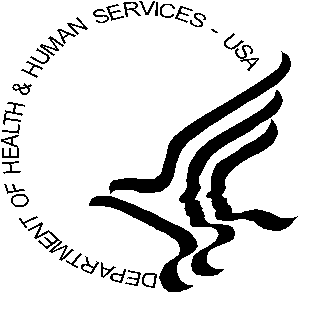 Public
Health Service
Public
Health Service
Rocky Mountain Laboratories
Hamilton, Montana 59840
(406) 363-3211
FTS (700) 322-8400

Willy Burgdorfer, Ph.D.
Scientist Emeritus
Rocky Mountain Laboratories
Tom G. Schwan, Ph.D.

Senior Staff Fellow
Laboratory of Microbial Structure and Function
Booklet Page #16
Lyme Disease & HIV
Booklet Page #17
HIV: This protocol has been shown to be very
effective in staving off HIV related infections while treating potentially
dangerous related viral, bacterial, and fungal infections in the process.
It has been reported to us that life threatening HIV related afflictions
have been rectified using this protocol, including untreatable skin lesions
which lead to life threatening infections, and beginning or mild cases
of Kaposi's Sarcoma. We have not reviewed any clinical testing that would
show MSP could treat or kill cancer cells. Nor in our inquiries have we
found that any testing has ever been done with MSP regarding any forms
of cancer. We have found in past literature that silver ions kill cancer
cells, however, silver ions can be extremely toxic if not controlled. The
controlling and localizing of these ions could well be an answer to manycancers
in the future.
Booklet Page #19
Infection
A heavy citrus diet can be cause of gout etc.
Avoid Milk Products Avoid Citrus
Cheese
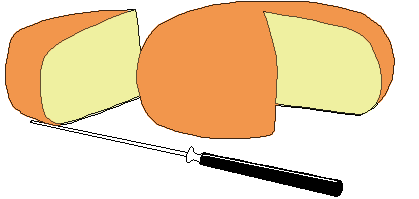 Oranges
Oranges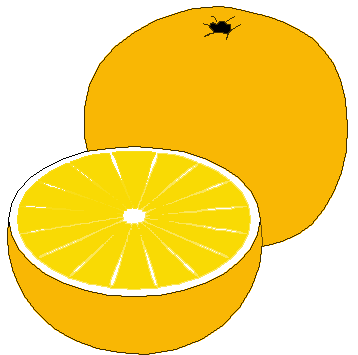 Icecream
Icecream Pineapple
Pineapple Milk
Milk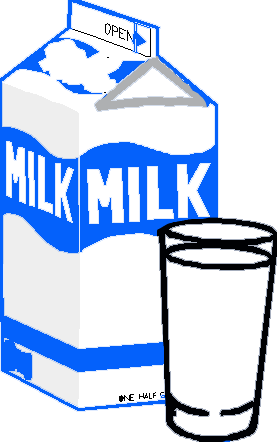 Tangerine and Kiwi
Tangerine and Kiwi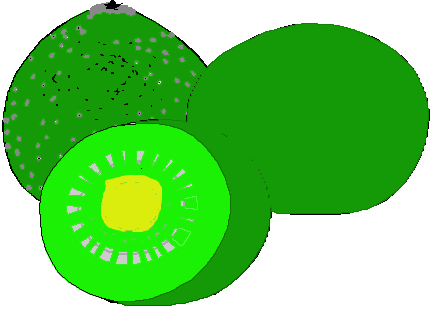 Butter
Butter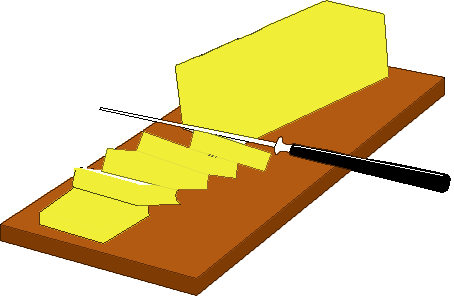 Citrus Juice
Citrus Juice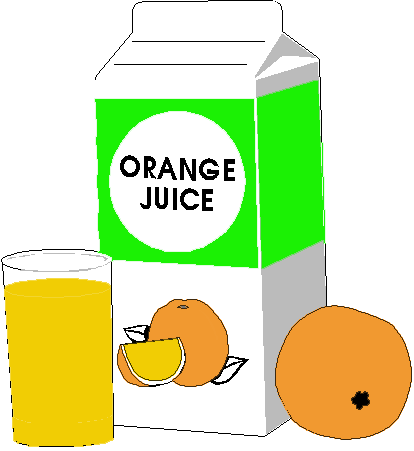 Yogurt
Yogurt Lime and Lemon
Lime and Lemon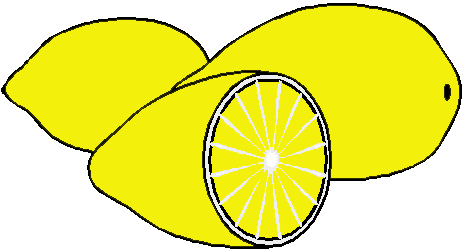 Gravies and Pudding
Gravies and Pudding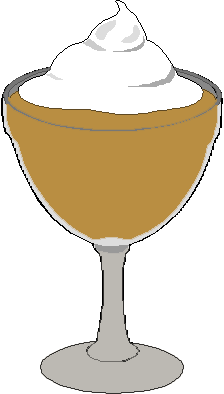 Grapefruit
Grapefruit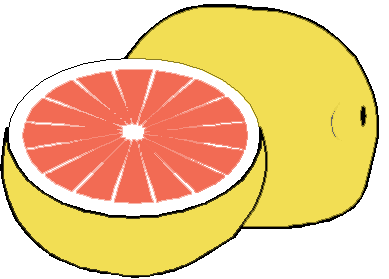

TEMPLE UNIVERSITY
A Commonwealth University
Department of Microbiology and Immunology
(215) 707-3203
Fax: (215) 707-7788
Booklet Page #21
Concentration of Special Formulation of Dilution of HIV-1 which induced
Mild Silver Protein in parts per million Syncytia Formulation on SupT1 cells
(ppm)
10-1 10-2 10-3 10-4
1000.0 ppm 0 0 0 0
100.0 ppm + 0 0 0
10.0 ppm + 0 0 0
1.0 ppm ++ ++ + +
0.1 ppm +++ +++ ++ +
None +++ +++ ++ +
The results the above experiment show that exposure of HIV-1 to 1000 ppm
of Special Formulation of Mild Silver Protein for one hour at 37°C
completely eliminates infectious HIV-1 as measured by syncytia formation
on SupT 1 cells. Exposure to between 100 ppm and 10ppm for one hour at
37°C significantly reduces HIV-1 infectivity as measured by syncytia
formation on SupT1 cells.
Concentration of Special Formulation Number of Lymphoblastoid Cells
required
Mild Silver Protein in parts per million to induce Syncytia Formation when
cocultured
(ppm) with SupT1 cells
10-1 10-2 10-3 10-4
1000.0 ppm 0 0 0 0
100.0 ppm 0 0 0 0
10.0 ppm 0 0 0 0
1.0 ppm ++ ++ + +
0.1 ppm +++ +++ ++ +
None +++ +++ ++ +
These experiments above show that exposure of Human Lymphoblastoid cells
latently infected with HIV-1 strain IIIB to special formulation of mild
silver protein at 1000 and 100 ppm eliminates latently infected HIV-1 as
measured by the ability of the Lymphoblastoid cell to form syncytia when
cocultured with SupT1 cells. Exposure of Lymphoblastoid cells to 10ppm
of special formulation of Mild Silver protein significantly reduces their
ability to form syncytia when cocultured with SupT1 cells.

Earl E. Henderson, Ph.D.
Professor
Booklet Page #22
Booklet Page #23
Regarding my husband's use of Mild Silver Protein: He has had a massive
cyst on his rib cage for six years. It has grown larger every year since
its discovery. My husband started very Mild Silver Protein the same time
I did. Within two weeks of his starting to use Silver Protein, we discovered,
much to our surprise and delight, that the size and length of the mass
had shrunk by over 50%. It is now half its previous
size, and less tender to the touch. In addition, my husband has also had
success with Mild Silver Protein concerning the number and severity of
his problems withathlete's foot.

Susan Buck
Booklet Page #24

Department of Microbiology and Immunology
(215) 707-3203
Fax: (215) 707-7788
Formulation of Silver Dilution of HIV-1 which Inducted
Syncytia Formation
Silver Solution
Concentration 10-1 10-2 10-3 10-4
15.00 ppm + 0 0 0
1.50 ppm +++ ++ + +
0.15 ppm +++ +++ ++ +
None +++ +++ ++ +
Mild Silver Protein
(Nitrate & Nitrite Free) 10-1 10-2 10-3 10-4
125.000 ppm 0 0 0 0
12.500 ppm ++ +- 0 0
1.250 ppm +++ ++ + 0
0.125 ppm +++ +++ ++ 1
None +++ +++ ++ 1
Booklet Page #25
*
Mild Silver Protein 10-1 10-2 10-3 10-4
3.00 ppm + + 0 0
0.30 ppm ++ ++ + +
0.03 ppm +++ +++ ++ +
None +++ +++ ++ +
AZT (10 mm) 0 0 0 0
Taken** as a whole these experiments show an in vitro effect with Mild
Silver Protein (Nitrate and Nitrite Free) as well as * on HIV
replication in the human T cell line, Supt 1. This inhibition of HIV-1.
Replication is dependent on the concentration of Mild Silver Protein. I
trust these preliminary in vitro results using very low concentrations
of Mild Silver Protein will interest you.

Earl E. Henderson, Ph.D.
Professor of Microbiology
Booklet Page #26
Toxicity of Mild Silver Protein, Jan 27, 1995
All experimental procedures were performed according to ethical guidelines,
approved by the appropriate committee on animal experimentation.
Booklet Page #27
Protein stabilized mild silver solutions are said to possess antiseptic
properties. These solutions seem to provide means of controlling infections
which may not be responsive to currently available antibiotics. If these
preparations are to be applied in vivo, it is necessary first to obtain
measures of tolerance or toxic reactions. The following studies profile
the toxic response in the rat model were performed.
Ten rats ranging in weight 176 - 200 grams were divided into 3 treatment
groups, A, B, and C, with 3 animals each and one served as an optional
control. A single dose, 1 ml of 0.15, 0.075 and 0.015 mg/ml Mild Silver
Protein Solution was administered using the tail vein.
Ten rats ranging in weight 176 - 200 grams were obtained from the supplier
noted above and divided into groups A, B, and C with 4, 4 and 2 animals
in those groups. Individuals were marked and received 1 ml of 0.15, 0.015
mg/ml Mild Silver Protein in group A and B respectively, daily for 12 days,
by injection via tail vein. The 2 animals on the control group, C were
sham injected with 1 ml of normal physiological saline.
There were no observable clinical or behavioral signs after the 12
day exposure period.
Booklet Page #28
Test 3: (DCM report, December 15, 1994)
Eighteen rats were divided into a treatment group comprising 15 individually
marked animals that were fed with Mild Silver Protein solution in drinking
water (1.5 ppm) over a 40 day period. Three animals were fed regular drinking
water and served as controls. All animals received normal rat chow (see
above) and were weighed daily.
After the 40 day period none of the animals showed clinical signs,
abnormal behavior or gross pathological features.
In a high dose study 6 rats were divided into 2 groups of 3 animals
each, groups A and B respectively. Animals in group A received 1 ml of
1.5 mg/ml Mild Silver Protein solution by injection into a tail vein, 3
times a week for 4 weeks, which is 18 mg total for rats weighing about
300 grams. The control group B, received sham injections at the same time
schedule. The animals were weighed at regular intervals.
Over the treatment period there were no clinical signs and no gross
pathological changes associated with the chronic intravenous injections
were observed.

John Barltrop
M.A., D.Phil, D.Sc.
*Highest dosage injected intraveneously through tail vein is the
equivalent of a human being taking 86 4oz. bottles in one week or 12 full
4oz. bottles every day with no side effects observed.
Based on the animal model that's a dozen bottles a day for a human
without any side effects.
Booklet Page #30
FINAL REPORT
Concentration Enterococcus Enterococcus
(nonfiltered Test Specimen) (filtered Test Specimen)
1500 ppm Moderate inhibition of Moderate inhibition of
Bacteria (1) Bacteria (1)
300 ppm No inhibition of bacteria No inhibition of bacteria
(1) Partial to complete zone of inhibition.
Booklet Page #31
(2) Broth Dilution Testing of Test Specimen
Concentration Enterococcus
750.00 ppm Growth (Growth)(2)
375.00 ppm Growth (Growth)
187.50 ppm Growth (Growth)
93.75 ppm Growth (Growth)
0.00 ppm Growth (Growth)
(2) Results expressed as growth or No Growth as visually observed in broth
cultures (Growth or No Growth as determined by streaking of broth cultures
onto sheep blood agar plates). Growth results from streaking of broth cultures
onto sheep blood agar plates are more reliable than growth results determined
by visual observation.
Booklet Page #32
(3) Broth Dilution Testing of Filter-Sterilized Test Specimen
Concentration Enterococcus
750.00 ppm Growth (Growth)(2)
375.00 ppm Growth (Growth)
187.50 ppm Growth (Growth)
93.75 ppm Growth (Growth)
(2) Results expressed as Growth or No Growth as visually observed in broth
cultures (Growth or No Growth as determined by streaking of broth cultures
onto sheep blood agar plates). Growth results from streaking of broth cultures
onto sheep blood agar plates are more reliable than growth results determined
by visual observation.
Booklet Page #33
FINAL REPORT
Booklet Page #34
(2) Broth Dilution Testing of Test Specimen A
Concentration S. pneumoniae P. aeruginosa
750.00 ppm No Growth (No Growth)* No Growth (No Growth)
375.00 ppm No Growth (No Growth) No Growth (Slight Growth)
187.50 ppm No Growth (No Growth) No Growth (Growth)
93.75 ppm No Growth (No Growth) No Growth (Growth)
0.00 ppm Growth (Growth) Growth (Growth)
*Results expressed as Growth or No Growth as visually observed in broth
cultures (Growth or No Growth as determined by streaking of broth cultures
onto sheep blood agar plates). Growth results from streaking of broth cultures
onto sheep blood agar plates are more reliable than growth results determined
by visual observation.
Booklet Page #35
Test Specimen Concentration E. coli S. aureus
150.0 ppm Growth Growth
75.0 ppm Growth Growth
37.5 ppm Growth Growth
0.0 ppm Growth** Growth**
(3) Broth Dilution Testing of Filter-Sterilized Test Specimen
Test Specimen Concentration E. coli S. aureus
150.0 ppm No Growth Growth
75.0 ppm No Growth Growth
37.5 ppm Growth Growth
CONCLUSIONS:
Booklet Page #36
Booklet Page #37
*INVIVE - REVIVE SILVER TYPE
Concentration S. pneumoniae P. aeruginosa
1500 ppm Inhibition of Bacteria Inhibition of Bacteria
300 ppm Inhibition of Bacteria Inhibition of Bacteria
750 ppm No Growth (No Growth)² No Growth (No Growth)
375 ppm No Growth (No Growth) No Growth (No Growth)
187.5 ppm No Growth (No Growth) No Growth (Growth)
93.75 ppm No Growth (No Growth) No Growth (Growth)
²Results expressed as Growth or No Growth as visually observed in
broth cultures (Growth or No Growth as determined by streaking of broth
cultures onto sheep blood agar plates). Growth results from streaking of
broth cultures onto sheep blood agar plates are more reliable than growth
results determined by visual observation.
Concentration S. aureus S. aureus
(exposed to non-filtered Test Specimen) (exposed to filtered Test Specimen)
1500 ppm No Inhibition of Bacteria No Inhibition of Bacteria
300 ppm No Inhibition of Bacteria Not Done
CONCLUSIONS:

TEMPLE UNIVERSITY
A Commonwealth University
Department of Microbiology and Immunology
(215) 707-3203
Fax: (215) 707-7788

Helen R. Buckley, Ph.D.
Professor
GLOBAL HEALTH INFORMATION & MEDICAL RESEARCH INSTITUTE
(GHI/MRI)
MEDICAL REVIEW BOARD MEMBERS
M.A. D. Phil., D. Sc.
Lecturer in chemistry at Oxford, England, 35 years
co-authored two books
120 scientific journal publications.
M.D.
Author of the following books:
Biological Aging Measurement, - Clinical Applications
Neuroendocrine Theory of Aging and Degenerative Disease
Smart Drugs & Nutrients
Smart Drugs II - The Next Generation.
Served on Board of Directors:
American Aging Society
Florida Geriatrics.
M.D.
President and Medical Director- Alzheimer's Prevention Foundation
Served on Board of Directors
Living Through Cancer, Inc.
American Academy of Medical Acupuncture
American Academy of Anti Aging Medicine
The Super Health Ranch
Speaker at over 60 conferences
Many publications- too numerous to mention.
Ph. D.
Genetic Scientist
President, GeriGene Medical Corporation
Served as Associate Scientist- Institute on Aging and Adult Life
Scientific Director- Björksten Research Foundation
Board of Directors- American Aging Association
24 scientific publications
Owner of three patents.
Booklet Page #41
GLOBAL HEALTH INFORMATION & MEDICAL RESEARCH INSTITUTE
(GHI/MRI)
Booklet Page #42
REFERENCES
Burgdorfer, Dr.W.- Ph.D., Scientist Emeritus, Discoverer of
Lyme Disease- for whom Lyme Spirochete was named: Borrelia Burgdorferi
from Colorado, Dr. Joseph Cardot- M.D.
Farber, Dr. M.P.- B.A., B.S., M.A., N.D., Ph.D., D.C.
Fox Chase Cancer Center
Galbraith Laboratories
Henderson Laboratories
INTERNET Raintree Group
National Dispensatory 1927
Rocky Mountain Laboratories, Division of N.I.H.
Temple University
University of South Florida
Developer and Manufacturer of Mild Silver Protein
Booklet Page #43
DISTRIBUTORS OF MILD SILVER PROTEIN
Starfish
Terminal Warehouse:
Chandler, Arizona, U.S.A. 85224
TO PLACE AN ORDER:
Do not send order to terminal,
Click here to order.
Mail request
to: International 1825 Main Street Winnipeg, Manitoba, Canada R2V 2A4
Tel: 1 800 877-5097

INTRODUCTORY
OFFER
Lowest MSP Price on
Internet
International Pharmaceuticals
1825 Main Street
Winnipeg, Manitoba, Canada R2V 2A4
Product name: REVIVE
Distributed to Practitioners and the public
1825-A Main Street
Winnipeg, Manitoba, Canada R2V 2A4
Tel: 1 204
694-8722 or 1 800 877-5097
Product name: INVIVE
Distributed to Practitioners and the public
= Why we distribute our "enhanced" 5,000 p.p.m. formula "to the people" even in the face of Financial Loss,
Assault from the FDA, Promoters, and Multinational Supplement Companies:
(anonymous)
These research papers have been compiled in the interests of the
public good and well-being as a public service. This knowledge is being
made available to help those individuals searching for a truth who have
been exposed to the undocumented hearsay of uninformed misguided self-appointed
experts on silver solutions. To counter these self-appointed experts, the
foregoing hard factual data has been supplied for all to see the truth.
ps: Try this only "uniquely" formulated and stabilized 1990's
Mild Silver Protein solution which has the smallest particle size in all
North America infused into a protein molecule, and not the 1890's
silver solutions, and prove the remarkable effects and results for yourself.
* Names of individuals and companies withheld, document edited, at the
request of distributor. Full references available upon request.
** (sic) Spelling corrections from original documents.
*** All italicized notations and boldface provided by publisher's assistant
to enable Doctors to speed-read data.
(c) 1995-2005